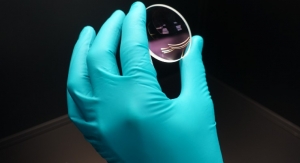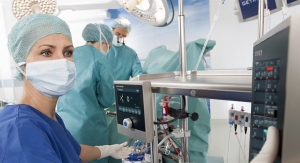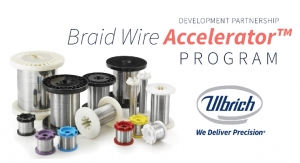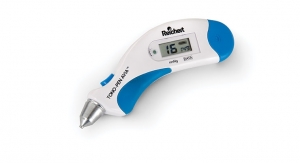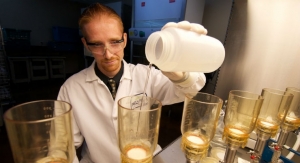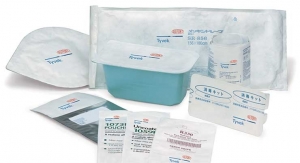David C. Robson, Principal, Robson Advisors09.07.18
Every team developing a new product sets out determined to design the best product possible, but the word “best” isn’t precise enough. Products are subject to business realities and constraints, often comprised of many attributes that can’t all be best. What “best” attribute or business objective should the team aim for? Best clinical effect or engineering function? Best human factors or design flexibility? Best cost of goods, project completion time, regulatory submission, or patent position?
These are often in conflict or even direct opposition—being the best in one aspect means the product won’t be in others. Perhaps this seems obvious, but history shows many project and management teams don’t understand the nature of and need for design compromises and tradeoffs.
Rather than developing the “best” product, project teams must pursue the best design balance among all business objectives and product attributes. Achieving the best design balance isn’t an exact science; it requires carefully considering priorities and tradeoffs that ultimately best serve the company’s goals. Finding the best design balance involves navigating a multi-dimensional set of tradeoffs and compromises. These fit into two major categories: business balancing and attribute balancing.
Business balancing ensures the project will be executed with an eye on the company’s ability to invest, desire for success, ability to stay in business, and eventually provide returns. This balancing inevitably requires design compromises since there are finite investment resources, capital, and amounts of time. Sadly, many early-stage companies miscalculate these balances and never see their product reach the market, even when it embodies meaningful clinical benefits.
Many business balancing considerations are addressed before the design team begins. Educated (and sometimes, not-so-educated) project budget and schedule estimates must be made. Assumptions are made concerning the regulatory submission path and likelihood of success. Technical feasibility and clinical effectiveness are often based on preliminary results. Projections are made on eventual market adoption, average selling price, payment codes, and myriad other facets to establish financial justification.
In both established and startup companies, seed money is often invested to conduct preliminary, exploratory proof-of-concept work and generate early conceptual configurations for the eventual commercial solution. These concepts are effectively a first blush attempt to envision the balanced design of the not-too-distant future. This can be helpful when explaining the opportunity to senior management and potential investors, provided caveats are repeatedly made that a disciplined design effort has not yet been conducted. This brings up the “chicken-and-the-egg” dilemma: time and money must be spent on these early efforts before determining they will be good investments.
These early concepts are also helpful when bringing the full-scale design and product development team onboard. It gives them a starting point and a way to absorb whatever work has occurred before their involvement. Following are several business balancing tradeoffs requiring careful consideration and regular re-examination when establishing and monitoring a new project.
Business potential vs. risk to success. A good management team should regularly assess this balance. Business potential depends on an ever-changing array of circumstances, many outside the company’s control. Sales and market penetration projections must be clear-eyed and defensible. Likewise, risks to project and business success must be regularly reevaluated. It’s shocking to see some allow their design to progress without first addressing the hardest, most risky issues. Each project is different, but the most common threats include an unmitigated patient harm potential, a foundational design weakness unsolvable within project constraints, an over-expensive or unclear regulatory path, competitive patent barriers, unreasonable user interfaces, or impractical miniaturization goals.
Minimally viable product entry vs. fully featured solution. Management must direct its design team to what’s “good enough” for a product introduction. This is strictly a business balancing decision needing regular reexamination. The typical investor-funded startup company must follow an approach that gets a product—even an expensive and hard to manufacture one—through the regulatory cycle and to limited production as quickly as possible. This is a critical valuation milestone and will notify firsthand whether basic assumptions were correct. The device can then be improved and features expanded once revenue is produced and investment interest is piqued.
Cost of goods vs. capital investment constraint. Management should handle this classic balancing conflict by clearly directing the design team. The eventual cost of goods (COGs) should always be in mind during design. Inevitably, COGs will be overpriced based on first and second year production quantities. Someone will indicate COGs could be minimized further with additional investments in parts count reduction and redesign, more sophisticated molds, automated assembly fixtures, or complicated manufacturing process. This is true, but these capital investments, including the cost of development resources for design adjustments and construction and manufacturing qualifications, can explode the capital investment plan. It may be better to allow an initially high COGs for a new-to-the-market product, especially if developed by a small company. This will hurt the profit margin and perhaps delay production ramp-up due to a less competitive sell price, but preserving capital can distinguish between a disappointing profit margin and going out of business.
Clearly state business goals and other success criteria. Management should give explicit orders and objectives when tasking the design team, and know what success looks like. Designing the “best” product is never the goal; it’s designing the best product within management’s established business success criteria. It is responsible to always keep the big picture in balance to let the design team concentrate on the product.
Beware mission creep causing a misbalance. Management teams can be the biggest offenders of adding “just one more thing” to the design, especially if founding inventors or clinicians are involved. It’s always tempting to expand the design’s objectives here and there, especially when the design team states it will be easy and only take a little more time and investment. Images of mythological Sirens luring away their unwitting victim come to mind… “It’s only a small design change. It will be done in no time.” Sound familiar?
Attribute balancing involves product configuration compromises to accommodate design conflicts and opposing needs. This is usually handled most practically once a number of design concepts are generated. The design team will have some sense of their objectives before generating concepts. There will undoubtedly be aspirational goals working with the management team or original inventors, and ideas are usually in place for functional requirements, anticipated use patterns and environments, and general cost targets. Until a few design concepts are on paper (or better yet, prototyped), it’s difficult to assess which is a better balance. Creative and open-minded product designers can absorb the project’s various goals and constraints and develop possible configurations for consideration. Conceptual configuration images and functionality plans then allow the team to more tangibly assess design balance by comparing concepts. This enables the team to understand potential adjustments needed to uncover an optimally well-balanced solution. That balanced solution, usually after management’s review and approval, becomes the target.
Human factors balanced with functionality. Tension often arises between human factors and product function. While the aspirational goal may be to develop a device that works all day, never breaks, and costs as little as possible, the real world doesn’t always allow that. A device with a large battery capacity may run all day, but will be bigger, heavier, and costlier—which may prove unacceptable. A device using strong, durable materials may last a long time, but will cost more and may require cleaning and sterilization—possibly an unacceptable burden on users. Users—and sometimes judges, via design awards—will recognize a well-designed product for striking a great balance between user interfaces and experiences and underlying functions. Words like “intuitive” and “easy-to-use” reflect this balance. Likewise, a device perceived as “advanced” or “sophisticated” has often coalesced various design goals into a unified solution.
Risk-to-success balanced with potential reward. This captures numerous subordinate balancing decisions. Sometimes what is optimally possible (e.g., pursuing a novel featherweight solution) isn’t worth the risk the design may fail or require more resources than originally forecast. Likewise, pursuing a design with a novel treatment method or significantly different interface must have potential benefits weighed against unintended consequences like poor user acceptance, or worse, poor regulatory acceptance. Perhaps the team thinks it has successfully designed around a patent roadblock and management is willing to risk an infringement suit. In some cases, proceeding with a suboptimal solution to avoid potential company-ending lawsuits is wiser. Sometimes the inputs and perspective for these balancing decisions are unknowable at the start, which is why projects usually run in phases. With a modest investment, the team can evaluate the concept’s feasibility or acceptance—really a risk-reward profile evaluation—to make an informed decision.
Build in adjustability/modularity when-ever possible. This idea is vastly easier to write than to practice. For product features or attributes with associated uncertainty or excessive risk, the ability to adjust the design’s balance can be a valuable risk mitigator. Changing the design—even conveniently via a modular approach—implies new regulatory filings or rationales, manufacturing and supply chain adjustments, and so on. Being able to swap out a key component, assembly, or software routine and replace it with a stronger, faster, or more available/durable solution can be worth additional unit cost and development efforts. This is especially true in new-to-industry designs unproven in large-scale production and use environments. It can also work in reverse, where the design team initially uses a more expensive component or process in the product configuration and, when ready, phases in a less expensive solution.
The best design optimizes the various conflicts and opposing needs to maximize success within financial constraints. This is equally true for large, multinational companies and mid-sized firms, while especially true for pre-revenue, investor-backed startups.
David C. Robson, a principal at Robson Advisors, has spent 30 years concentrating on medical device development. Seventeen of those were spent working for a full-service product development firm where he interacted with both large and small medical device companies and reviewed statements of work and requests for quotation, wrote proposals, and negotiated hundreds of work agreements. Robson and his partners now offer product development guidance and advocacy to early-stage medical device clients.
These are often in conflict or even direct opposition—being the best in one aspect means the product won’t be in others. Perhaps this seems obvious, but history shows many project and management teams don’t understand the nature of and need for design compromises and tradeoffs.
Rather than developing the “best” product, project teams must pursue the best design balance among all business objectives and product attributes. Achieving the best design balance isn’t an exact science; it requires carefully considering priorities and tradeoffs that ultimately best serve the company’s goals. Finding the best design balance involves navigating a multi-dimensional set of tradeoffs and compromises. These fit into two major categories: business balancing and attribute balancing.
Business balancing ensures the project will be executed with an eye on the company’s ability to invest, desire for success, ability to stay in business, and eventually provide returns. This balancing inevitably requires design compromises since there are finite investment resources, capital, and amounts of time. Sadly, many early-stage companies miscalculate these balances and never see their product reach the market, even when it embodies meaningful clinical benefits.
Many business balancing considerations are addressed before the design team begins. Educated (and sometimes, not-so-educated) project budget and schedule estimates must be made. Assumptions are made concerning the regulatory submission path and likelihood of success. Technical feasibility and clinical effectiveness are often based on preliminary results. Projections are made on eventual market adoption, average selling price, payment codes, and myriad other facets to establish financial justification.
In both established and startup companies, seed money is often invested to conduct preliminary, exploratory proof-of-concept work and generate early conceptual configurations for the eventual commercial solution. These concepts are effectively a first blush attempt to envision the balanced design of the not-too-distant future. This can be helpful when explaining the opportunity to senior management and potential investors, provided caveats are repeatedly made that a disciplined design effort has not yet been conducted. This brings up the “chicken-and-the-egg” dilemma: time and money must be spent on these early efforts before determining they will be good investments.
These early concepts are also helpful when bringing the full-scale design and product development team onboard. It gives them a starting point and a way to absorb whatever work has occurred before their involvement. Following are several business balancing tradeoffs requiring careful consideration and regular re-examination when establishing and monitoring a new project.
Business potential vs. risk to success. A good management team should regularly assess this balance. Business potential depends on an ever-changing array of circumstances, many outside the company’s control. Sales and market penetration projections must be clear-eyed and defensible. Likewise, risks to project and business success must be regularly reevaluated. It’s shocking to see some allow their design to progress without first addressing the hardest, most risky issues. Each project is different, but the most common threats include an unmitigated patient harm potential, a foundational design weakness unsolvable within project constraints, an over-expensive or unclear regulatory path, competitive patent barriers, unreasonable user interfaces, or impractical miniaturization goals.
Minimally viable product entry vs. fully featured solution. Management must direct its design team to what’s “good enough” for a product introduction. This is strictly a business balancing decision needing regular reexamination. The typical investor-funded startup company must follow an approach that gets a product—even an expensive and hard to manufacture one—through the regulatory cycle and to limited production as quickly as possible. This is a critical valuation milestone and will notify firsthand whether basic assumptions were correct. The device can then be improved and features expanded once revenue is produced and investment interest is piqued.
Cost of goods vs. capital investment constraint. Management should handle this classic balancing conflict by clearly directing the design team. The eventual cost of goods (COGs) should always be in mind during design. Inevitably, COGs will be overpriced based on first and second year production quantities. Someone will indicate COGs could be minimized further with additional investments in parts count reduction and redesign, more sophisticated molds, automated assembly fixtures, or complicated manufacturing process. This is true, but these capital investments, including the cost of development resources for design adjustments and construction and manufacturing qualifications, can explode the capital investment plan. It may be better to allow an initially high COGs for a new-to-the-market product, especially if developed by a small company. This will hurt the profit margin and perhaps delay production ramp-up due to a less competitive sell price, but preserving capital can distinguish between a disappointing profit margin and going out of business.
Clearly state business goals and other success criteria. Management should give explicit orders and objectives when tasking the design team, and know what success looks like. Designing the “best” product is never the goal; it’s designing the best product within management’s established business success criteria. It is responsible to always keep the big picture in balance to let the design team concentrate on the product.
Beware mission creep causing a misbalance. Management teams can be the biggest offenders of adding “just one more thing” to the design, especially if founding inventors or clinicians are involved. It’s always tempting to expand the design’s objectives here and there, especially when the design team states it will be easy and only take a little more time and investment. Images of mythological Sirens luring away their unwitting victim come to mind… “It’s only a small design change. It will be done in no time.” Sound familiar?
Attribute balancing involves product configuration compromises to accommodate design conflicts and opposing needs. This is usually handled most practically once a number of design concepts are generated. The design team will have some sense of their objectives before generating concepts. There will undoubtedly be aspirational goals working with the management team or original inventors, and ideas are usually in place for functional requirements, anticipated use patterns and environments, and general cost targets. Until a few design concepts are on paper (or better yet, prototyped), it’s difficult to assess which is a better balance. Creative and open-minded product designers can absorb the project’s various goals and constraints and develop possible configurations for consideration. Conceptual configuration images and functionality plans then allow the team to more tangibly assess design balance by comparing concepts. This enables the team to understand potential adjustments needed to uncover an optimally well-balanced solution. That balanced solution, usually after management’s review and approval, becomes the target.
Human factors balanced with functionality. Tension often arises between human factors and product function. While the aspirational goal may be to develop a device that works all day, never breaks, and costs as little as possible, the real world doesn’t always allow that. A device with a large battery capacity may run all day, but will be bigger, heavier, and costlier—which may prove unacceptable. A device using strong, durable materials may last a long time, but will cost more and may require cleaning and sterilization—possibly an unacceptable burden on users. Users—and sometimes judges, via design awards—will recognize a well-designed product for striking a great balance between user interfaces and experiences and underlying functions. Words like “intuitive” and “easy-to-use” reflect this balance. Likewise, a device perceived as “advanced” or “sophisticated” has often coalesced various design goals into a unified solution.
Risk-to-success balanced with potential reward. This captures numerous subordinate balancing decisions. Sometimes what is optimally possible (e.g., pursuing a novel featherweight solution) isn’t worth the risk the design may fail or require more resources than originally forecast. Likewise, pursuing a design with a novel treatment method or significantly different interface must have potential benefits weighed against unintended consequences like poor user acceptance, or worse, poor regulatory acceptance. Perhaps the team thinks it has successfully designed around a patent roadblock and management is willing to risk an infringement suit. In some cases, proceeding with a suboptimal solution to avoid potential company-ending lawsuits is wiser. Sometimes the inputs and perspective for these balancing decisions are unknowable at the start, which is why projects usually run in phases. With a modest investment, the team can evaluate the concept’s feasibility or acceptance—really a risk-reward profile evaluation—to make an informed decision.
Build in adjustability/modularity when-ever possible. This idea is vastly easier to write than to practice. For product features or attributes with associated uncertainty or excessive risk, the ability to adjust the design’s balance can be a valuable risk mitigator. Changing the design—even conveniently via a modular approach—implies new regulatory filings or rationales, manufacturing and supply chain adjustments, and so on. Being able to swap out a key component, assembly, or software routine and replace it with a stronger, faster, or more available/durable solution can be worth additional unit cost and development efforts. This is especially true in new-to-industry designs unproven in large-scale production and use environments. It can also work in reverse, where the design team initially uses a more expensive component or process in the product configuration and, when ready, phases in a less expensive solution.
The best design optimizes the various conflicts and opposing needs to maximize success within financial constraints. This is equally true for large, multinational companies and mid-sized firms, while especially true for pre-revenue, investor-backed startups.
David C. Robson, a principal at Robson Advisors, has spent 30 years concentrating on medical device development. Seventeen of those were spent working for a full-service product development firm where he interacted with both large and small medical device companies and reviewed statements of work and requests for quotation, wrote proposals, and negotiated hundreds of work agreements. Robson and his partners now offer product development guidance and advocacy to early-stage medical device clients.




